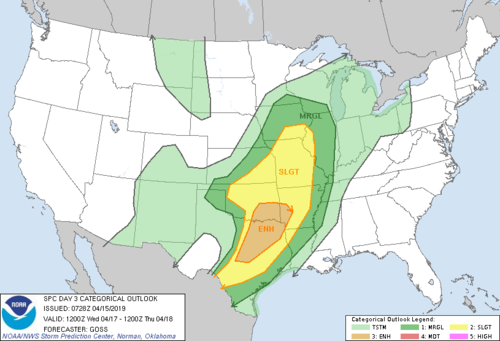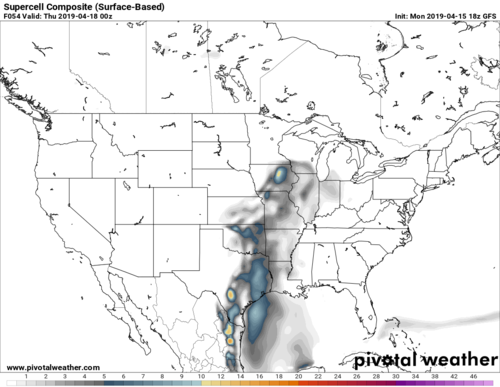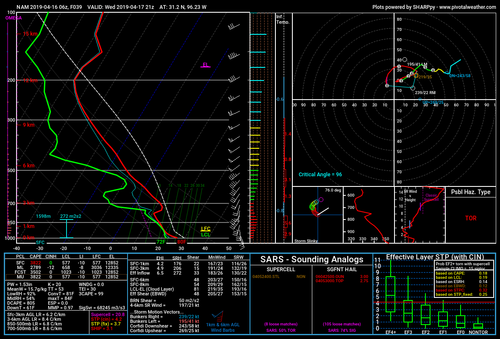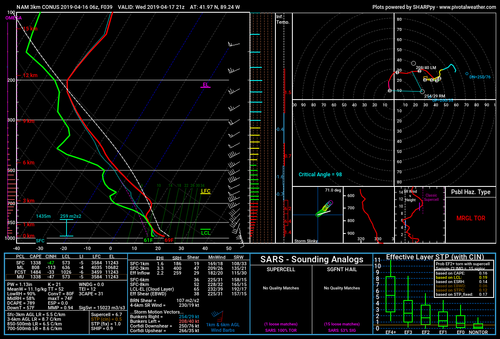Marc Gebhard
Enthusiast
I'll start a new thread here. It appears things are ramping up for more potential severe weather on Wednesday. Check out the SPC outlook as of Monday midday.

And the NAM SIGTOR as of 18Z Monday Run for 0 Z (7 pm Central) Wednesday Evening.

Interestingly enough GFS is not nearly as aggressive as NAM or the SPC forecast.

Does anyone have any thoughts on Wednesday yet? A bit early in the game. I guess we'll know more tomorrow.

And the NAM SIGTOR as of 18Z Monday Run for 0 Z (7 pm Central) Wednesday Evening.

Interestingly enough GFS is not nearly as aggressive as NAM or the SPC forecast.

Does anyone have any thoughts on Wednesday yet? A bit early in the game. I guess we'll know more tomorrow.


